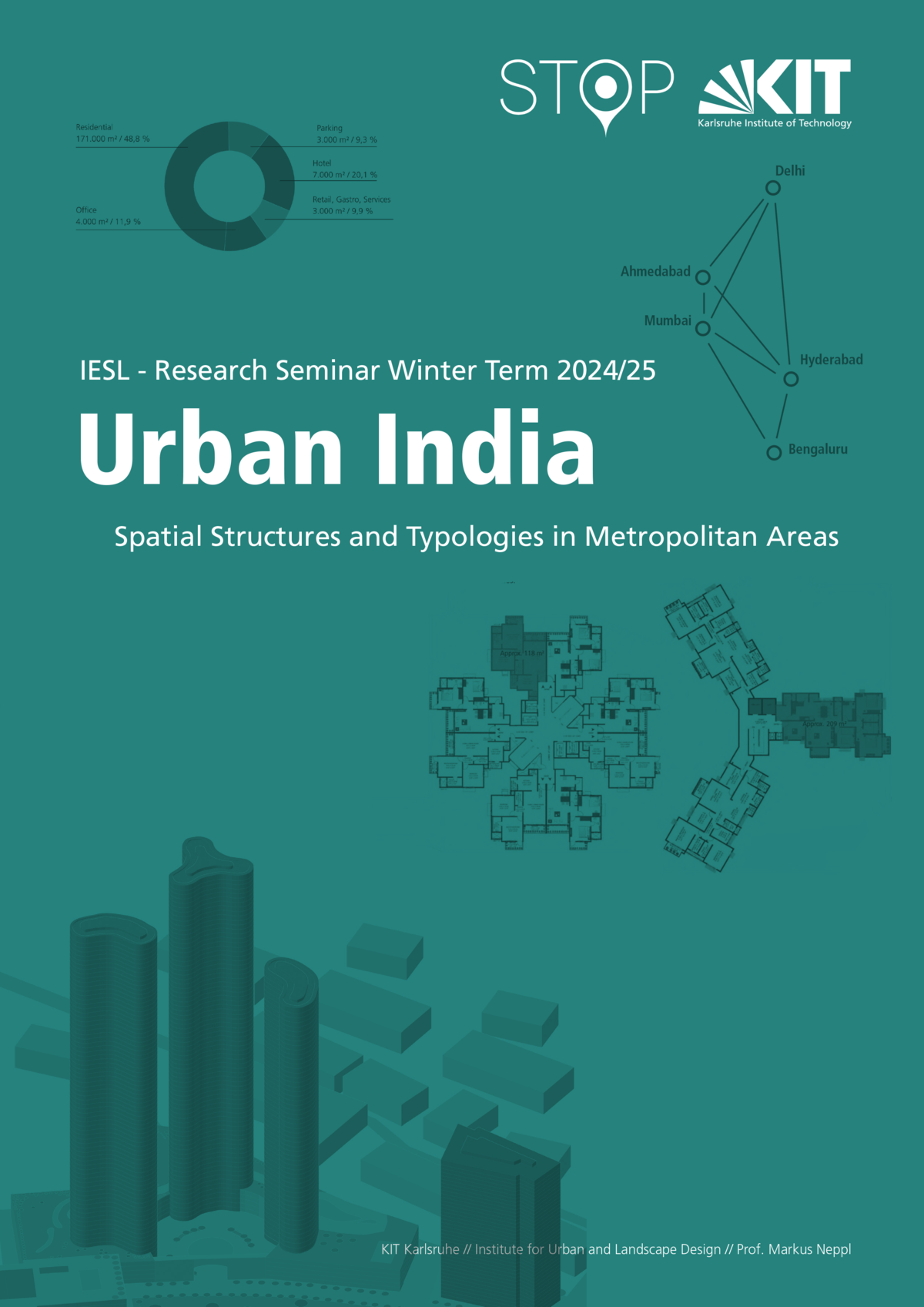Dokumentation des Forschungsseminares ´Urban India´
Prof. Markus Neppl, Dr. Manuel Giralt
With an urban population well below 40%, India is experiencing one of the most dynamic urbanization processes globally. We take this as a starting point to examine current urban development in South Asia with a focus on urban growth patterns and prevailing building typologies in metropolitan areas like Mumbai, Delhi, Mumbai, Bengaluru, Hyderabad and Ahmedabad.
After a dive into the history and current trajectories of urban development of these fascinating cities, this study focuses on individual projects, their urban structures, mobility networks and open spaces. In order to achieve comparable results, in each city three representative areas are selected for detailed analysis.
The results of this study address questions regarding the prevailing urban form, urban design, typologies and mix of functions in contemporary urban development projects in fast growing cities across India.
With an expected urban growth of more than 400 million new inhabitants within the next 25 to 30 years, India now has the historic chance to shape the future of its cities today and for the years to come.
Against this backdrop, the results of this study can be seen from a different perspective and raise further questions:
Is the gated community high-rise scheme the inevitable predominant form of urban development in India? Or are there other conceptual urban design solutions that might guide Indian cities to a more favourable, sustainable and socially just urban future?
Publikation Urban India: Spatial Structures and Typologies in Metropolitan Areas:
https://publikationen.bibliothek.kit.edu/1000184813


